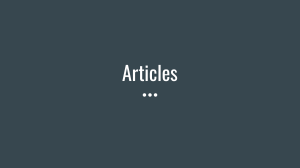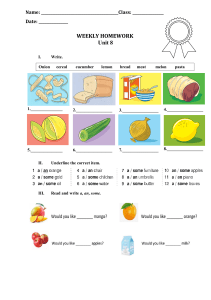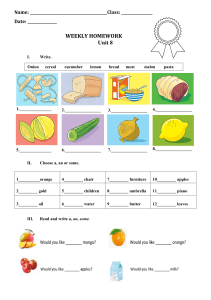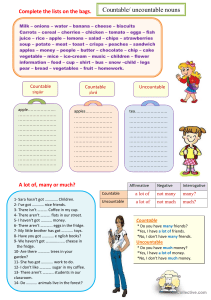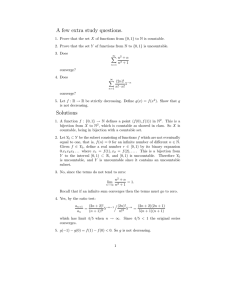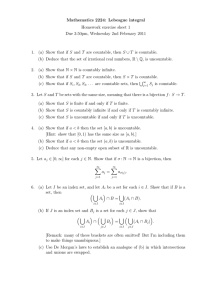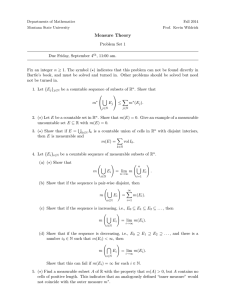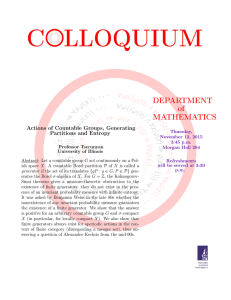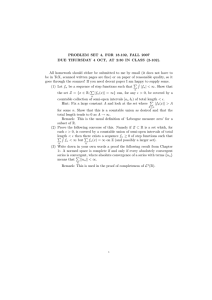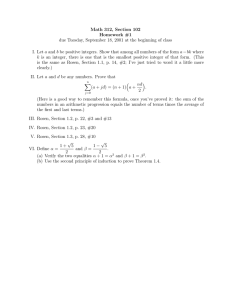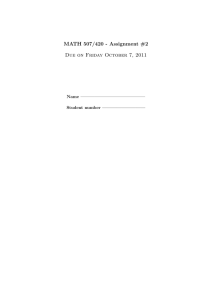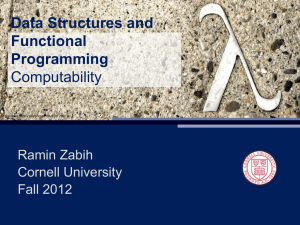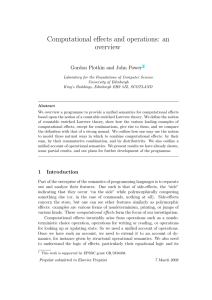CSC228 7/11/2016 Sequences/ Summations
advertisement
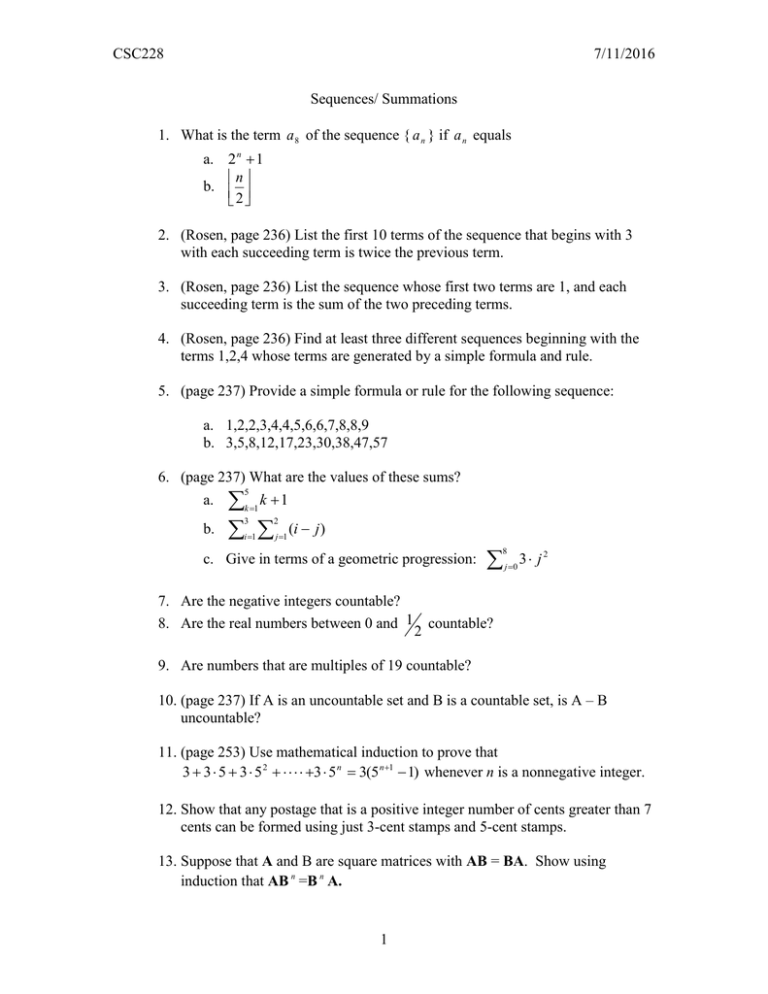
CSC228
7/11/2016
Sequences/ Summations
1. What is the term a 8 of the sequence { a n } if a n equals
a. 2 n 1
n
b.
2
2. (Rosen, page 236) List the first 10 terms of the sequence that begins with 3
with each succeeding term is twice the previous term.
3. (Rosen, page 236) List the sequence whose first two terms are 1, and each
succeeding term is the sum of the two preceding terms.
4. (Rosen, page 236) Find at least three different sequences beginning with the
terms 1,2,4 whose terms are generated by a simple formula and rule.
5. (page 237) Provide a simple formula or rule for the following sequence:
a. 1,2,2,3,4,4,5,6,6,7,8,8,9
b. 3,5,8,12,17,23,30,38,47,57
6. (page 237) What are the values of these sums?
5
a. k 1 k 1
b.
3
2
i 1
j 1
(i j )
c. Give in terms of a geometric progression:
8
j 0
3 j2
7. Are the negative integers countable?
8. Are the real numbers between 0 and 1 countable?
2
9. Are numbers that are multiples of 19 countable?
10. (page 237) If A is an uncountable set and B is a countable set, is A – B
uncountable?
11. (page 253) Use mathematical induction to prove that
3 3 5 3 5 2 3 5 n 3(5 n1 1) whenever n is a nonnegative integer.
12. Show that any postage that is a positive integer number of cents greater than 7
cents can be formed using just 3-cent stamps and 5-cent stamps.
13. Suppose that A and B are square matrices with AB = BA. Show using
induction that AB n =B n A.
1
